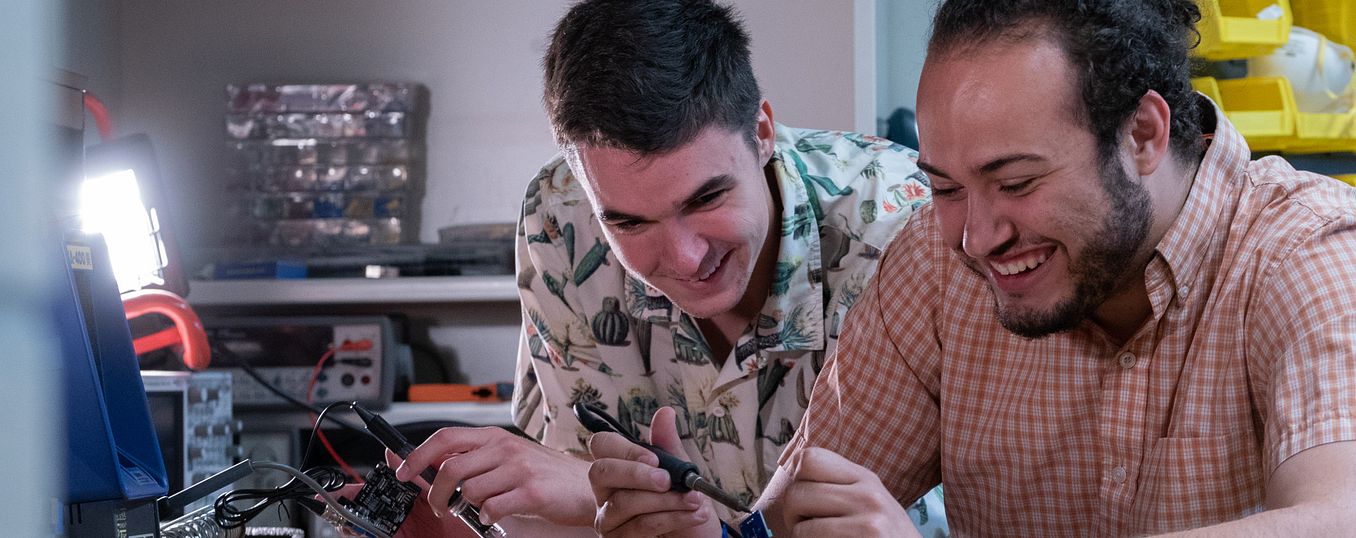By: Scott Leutenegger, Professor and JEDI Director, and Michelle B. Sabick, Dean, Ritchie School of Engineering and Computer Science
During the 2021–2022 academic year, the Ritchie School of Engineering and Computer Science (RSECS) updated its faculty hiring process to improve transparency; clarify roles and responsibilities; and incorporate best practices related to justice, equity, diversity, and inclusion (JEDI). In this article, we share details about the process we established and offer lessons learned for the future.
Outline of the Process
First, we drafted a job ad that included more upbeat and inclusive language than in previous years. For example, early in the ad, we note:
We enthusiastically invite applications from a broad and diverse pool of researchers across the [discipline of interest]. We are building an academically and culturally diverse faculty and staff who teach and work in a supportive environment surrounded by people with a strong commitment to Diversity, Equity, and Inclusion (DEI). Our institutional DEI action plan can be found here.
In addition, the job ad required applicants to submit a DEI statement along with the usual teaching and research statements.
We shared the ad template with each faculty search committee, who then added specifics to their department and articulated specific disciplinary areas related to the search. Search committees also developed strategic hiring plans to make sure ads were getting to a diverse audience of potential applicants. Before posting, job ads and hiring plans were approved by the JEDI director and dean.
In addition, we updated the training and management of search committees. The JEDI director coordinated with other offices on campus to design two training sessions on the value of DEI. Before any candidate materials were reviewed, each committee created a rubric for assessing materials, including assigning weights to various categories being evaluated, with a few guardrails. For example, the JEDI category could not be worth less than 10% of the candidate’s overall score. After the various rubrics were created, search committees reconvened and presented their rubrics to one another. This step allowed committees to share their knowledge, develop best practices, and demonstrate what they learned. It also allowed everyone to see the differences between groups and how skills would be valued in different contexts.
Search committees were also expected to use deliberative decision-making to assure committee meetings were welcoming to all members, and that all voices could be heard equally. Finally, we created a process document that guides the committee through the entire search. The process document reflects a new standard practice, so it is not dependent on an individual leader or advocate. The document also provides a handy reference to clarify the roles of the search committee, department chair, and dean.
Lessons Learned
We learned a lot as we moved through the process. Sometimes it felt like we were building the plane while we were flying it. In retrospect, here are some important lessons that emerged:
- Make it clear from the beginning that every search committee member must complete the rubric for each candidate they evaluate. Because this had not been our practice before, some search committee members balked at “doing the paperwork.”
- Rubric completion should be done independently and should be based only on information found in the application packet—even if the candidate is well known to evaluators. There should be evidence for every score assigned to give every candidate a level playing field and reduce some types of bias.
- Rubrics with lots of categories take significant time to complete. A simple rubric will allow evaluators to do their work efficiently. For searches with many applicants, an initial screening based solely on required qualifications can be used to decrease the number of candidates for whom a full analysis is conducted. Another option is to have all candidates evaluated by 3 or 4 committee members much like a grant-review study section to keep the workload reasonable.
- A good committee chair who understands their role and is committed to hearing all voices makes a huge difference in committee success.
- Even just having a DEI statement and having committee members reflect on what “counts” as DEI activity and what is “excellent” changes the way faculty think about DEI and value those activities.
- Committees need to be reminded of their role—to generate a list of highly qualified finalists, not necessarily to pick the winner. This may vary a bit by unit, but in RSECS, committee feedback is critically important to the final selection; however, the department chair and dean need a voice in the process as well.
- Some engineering schools are starting to do a first pass evaluation of applicants solely on their DEI statement. That way, the rest of the rubric categories are only evaluated for candidates that were deemed to legitimately value DEI. This is a nice way to focus the search on candidates we are hoping to attract, while reducing workload for the committee. We will consider this approach in the future.
- Sample DEI statements are available on the web. It is worth spending a few minutes to find a few online and look them over. We had a candidate send in a DEI statement that was plagiarized from one of those sites, and we were glad that we recognized that the content was not original when we saw it. This phenomenon will likely increase as the expectation of DEI statements expands throughout academia.
While we know that the form and function of faculty search committees ultimately varies with context, we hope our experience provides some good ideas to make your searches more equitable. We are also happy to receive feedback, so please let us know if you have experiences that could help us improve our process this year.


